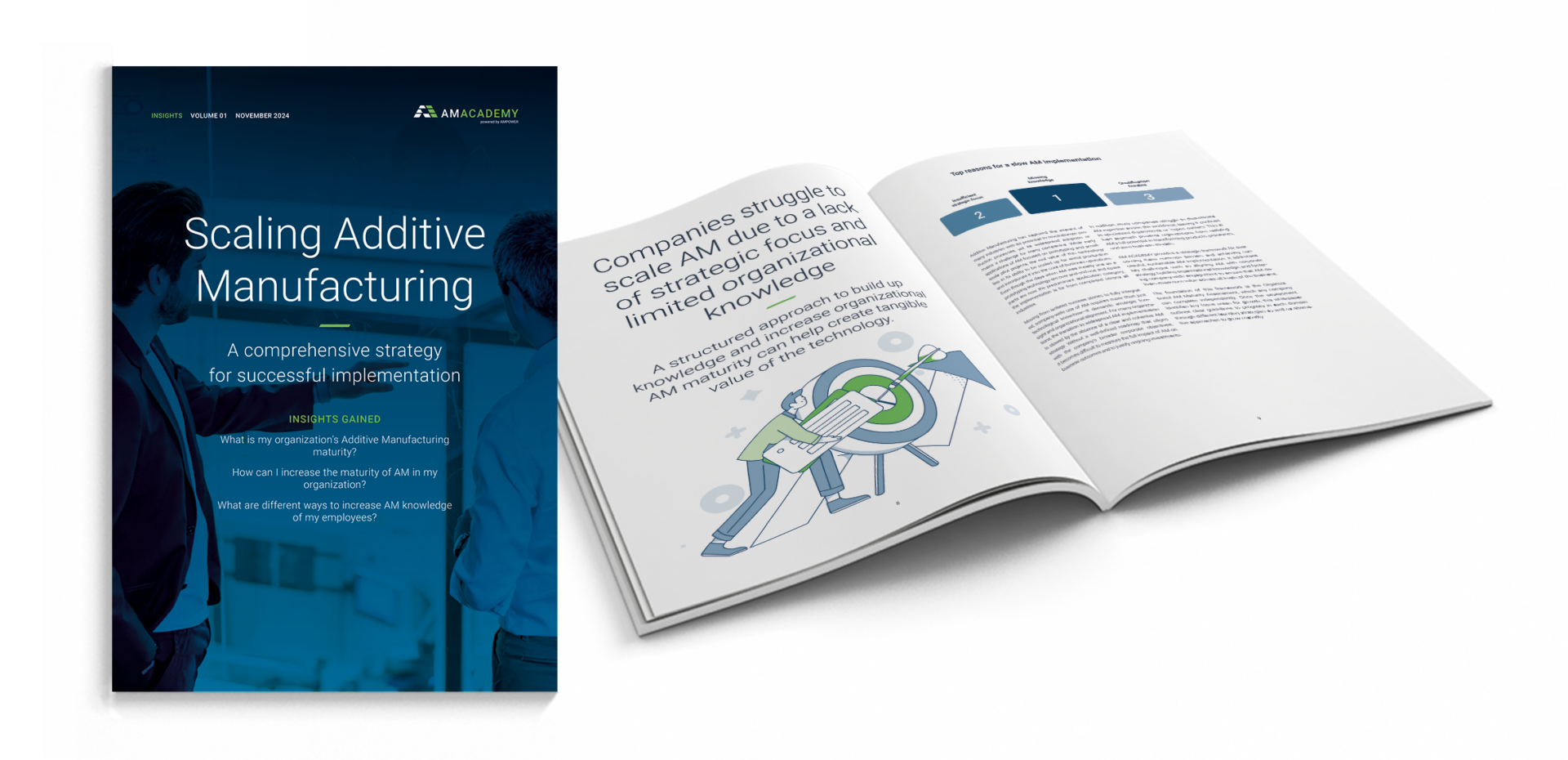AM Academy Insights
Additive Manufacturing implementation:
A comprehensive strategy
Discover your organization’s Additive Manufacturing maturity, learn strategies to advance it, and explore effective ways to build AM knowledge among your employees.

Insights
- What is my organization’s Additive Manufacturing maturity?
- How can I increase the maturity of AM in my organization?
- What are different ways to build up AM knowledge of my employees?
Assess your Organization's AM Maturity
Understanding an organization’s maturity in Additive Manufacturing is key to guiding its strategic growth. Companies generally progress through four phases: Exploration, where technologies and use cases are tested; Implementation, where AM becomes embedded in select areas; Expansion, where AM is expanded to more departments; and Scaling, where AM is globally integrated across all business functions. By assessing each domain’s maturity level through targeted questions, companies gain insight into their current AM capabilities, enabling them to take specific actions to advance their competitiveness and fully leverage AM’s transformative potential.
To support this process, the AM Academy has developed a guided self-assessment to help evaluate your organization’s AM maturity. Upon completing the assessment, you will receive a customized report with your current maturity level, tailored recommendations to increase maturity, and benchmarking feedback to show how you compare with industry peers.


End-to-end integration of Additive Manufacturing
The adoption of Additive Manufacturing is a transformative process impacting every aspect of a business, from strategic planning and product design to supply chain and procurement. AM brings unique opportunities, challenging traditional operational models and requiring companies to rethink how they approach production, quality, and innovation. We’ve identified five primary domains -Strategy, Product & Design, Technology & Engineering, Standards & Qualification, and Supply Chain & Purchasing – that play a critical role in ensuring effective AM integration. Building maturity across these areas is essential to fully harness AM’s potential and enable a successful transition from traditional to advanced manufacturing.
Building Expertise to increase Maturity
Building AM expertise requires a targeted, hybrid learning path tailored to the organization’s current maturity level. After evaluating the maturity across AM domains, training efforts should focus on areas with lower levels. This approach starts with Online Learning to build foundational knowledge and then advances to Live Trainings & Workshops for hands-on practice, Guided Programs for structured project implementation, and Consulting for customized strategies. A central AM expert team should oversee these efforts, with key employees leading within their domains. As maturity grows, combining these learning methods becomes essential, and additional initiatives—like trade fairs, networking, and internal competitions—can further accelerate AM knowledge across the organization.

